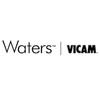
Content sponsored by:
VICAM
Mycotoxin Test Methods
Selecting the Right Mycotoxin Test Method
Published: September 15, 2011
Source : Diego Montemayor, DVM (Vicam)
The question of which mycotoxin test method is best for your needs has no one-size-fits-all answer. To ensure the best return on investment, your decision-making process should weigh the accuracy, precision, and reliability of the methods under consideration against the specific demands of your applications and your industry and market priorities. The following review of longstanding and emerging qualitative and quantitative mycotoxin test methods outlines their performance characteristics, as well their practical benefits and tradeoffs for business and laboratory end users.
Practical Solutions for Agribusiness, Small Laboratories, and High-Volume Testing Demands
Today's increasingly extensive selection of cost-efficient rapid methods offers a diverse range of targeted solutions to the complex challenges of identifying and managing mycotoxin contamination at every phase of the global food and feed chain.
Lateral flow strips This simple visual detection method enables nontechnical users to quickly and accurately discriminate between positive and negative samples at or near USDA/GIPSA levels. With their ease-of-use and long-term stability across wide range of climates, these immunoassays are particularly well adapted for testing in the field. The entire testing process, including sample preparation, usually takes less than 10 minutes to complete.* In addition to providing a quick yes or no answer at predetermined thresholds, a number of kits enable users to convert the antibody line on positive test strips into numerical estimates of mycotoxin concentrations with a handheld optical scanner.
A fast, affordable method for
- Routine monitoring of feed safety
- Onsite quality assurance programs in fields, storage facilities, and food and feed processing plants
- Acceptance/rejection of inbound shipments at buying points
- Rapid laboratory identification of samples for instrumental analysis
Tradeoffs
- Lacks high-level performance characteristics required to accurately determine trace mycotoxin concentrations in some complex matrices (e.g., wine)
- Requires instrumental analysis to confirm contamination levels
* Capillary flow times, cut-off thresholds, sensitivity, and other performance characteristics vary depending on product's design specifications and the materials and processes used in its manufacture.
Enzyme-linked immunosorbent assays (ELISA) This long-established immunological method enables users to visually determine the presence of mycotoxin contamination by applying colorimetric reagents to sample extracts on antibody-coated microtiter plates, tubes, membranes, or other solid surfaces. No advanced training or costly laboratory instruments are required. Many kits can also be used with optical microplate readers that calculate and record numerical results.
A useful and cost-effective tool for
- High-volume sample screening in laboratories
- Quality control at grain elevators, feed mills, and food production sites
- Fast inspection and documentation of individual inbound loads for acceptance or rejection
Tradeoffs
- Relatively high occurrence of false negatives and positives
- Lack of accuracy at low concentrations
- Improper temperature conditions may interfere with performance
- Results require lab analysis to confirm compliance with EU regulations
Rapid fluorometric test kits This cost-effective quantitative method enables non-technical users to analyze sample extracts with a handheld device that measures the fluorescence of the target mycotoxins and records the test data. The devices are relatively inexpensive, simple for non-technical users to operate, and deliver results at trace (ppb/ppt) levels in a little as 10 minutes.** Although most fluorometric applications require sample cleanup to remove compounds that might interfere with test results, the use of rapid immunoaffinity and solid-phase cleanup columns enables non-technical personnel to easily perform this step in the field.
A portable real-time method of
- Monitoring mycotoxin levels during shipment, handling, and storage
- Certifying grain commodities meet USDA/GIPSA export standards
- Facilitating rapid, reliable decisions and documenting test results at buying points
- Verifying quality control and compliance procedures
Tradeoffs
- Results may be less precise and consistent than laboratory methods
- Limited to detecting total aflatoxins and fumonisins (more advanced method required to determine individual levels of B1, B2, etc.)
**Precision, speed, and other performance characteristics and features of this method may vary depending on the design of instrument and cleanup method used.
Instrumental Methods: The Gold Standard in Mycotoxin Analysis
High-performance liquid chromatography (HPLC), combined chromatographic techniques, and liquid chromatography used in tandem with mass spectrometry (LC/MS/MS) represent the state of the art in quantitative mycotoxin analysis. These sophisticated instrumental methods meet the exacting performance criteria of international standards bodies such as European Committee for Standardization (CEN) and are the methods of choice for high-risk regulatory issues, simultaneous analysis of multiple mycotoxin species, and other challenging applications that require outsourcing to large public sector or commercial analytic laboratories.
The most sensitive and robust analytic methods for
- Official confirmation of trace levels of mycotoxin contamination
- Efficient, cost-effective analysis of multiple mycotoxins in a single commodity shipment-eliminates the need to run multiple procedures
- Verification of compliance with the European stringent food safety regulations
Tradeoffs
- Long turnaround times especially during periods of high demand
- Expensive equipment
- High level of expertise required to run procedures
Related topics:
Mentioned in this news release:

Recommend
Comment
Share

Would you like to discuss another topic? Create a new post to engage with experts in the community.


